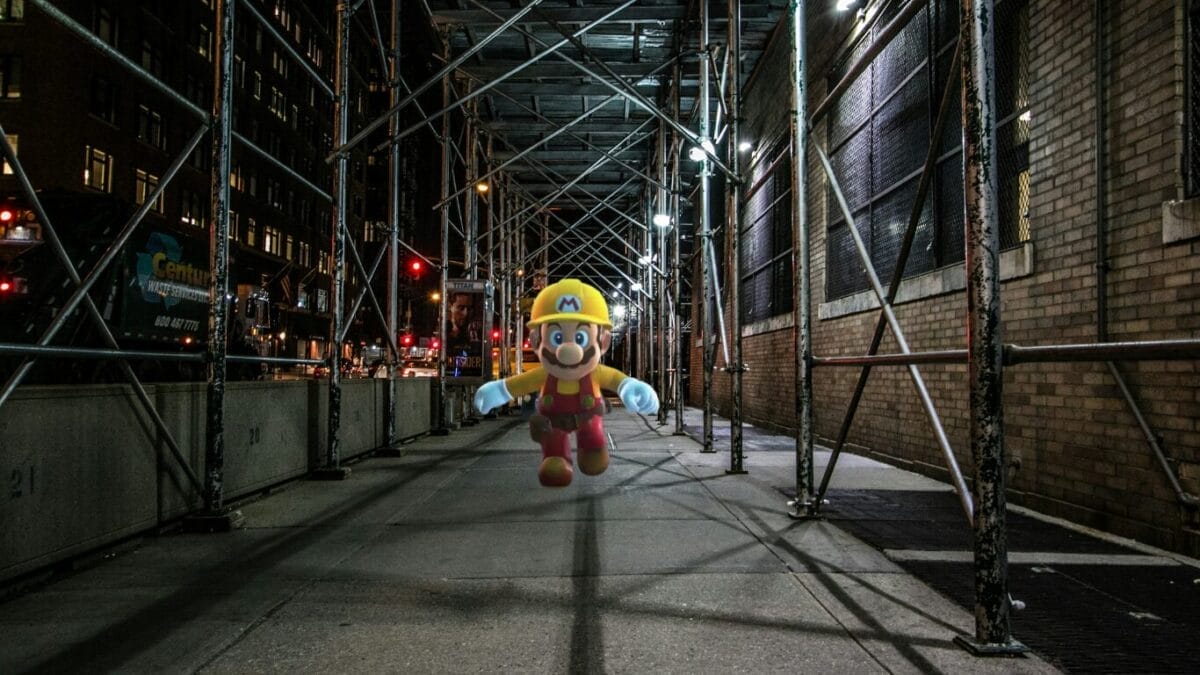By Addison Del Mastro
The first time I remember meeting Zess was by accident; she lost her contact lenses, and I accidentally stepped on them. A quick run to the store patched that up, and every time I ran into her as I passed through town, she’d chat with me briefly, though she was a little standoffish. At some point she invited me to her home, which doubled as a sort of unlicensed restaurant, where she got to enjoy her passion for cooking without the trouble of running a full business. The twist was that I would bring her the ingredients, and she’d work her magic with them. After a couple of visits, she even made a recipe that she hadn’t made in years, since her husband had tragically died. All that because of the proximity we shared in town.
I met a fellow who runs a small business on Main Street, and because I grew up right outside town and visited often, I’d always stop by his place. At first it was just chatting about business and whatever was going on in town—mostly, a big and controversial redevelopment project involving the town’s historic hotel. It turned out we shared an interest in development and housing issues, and our chats would involve big ideas (from me) and bits of insider town news (from him). I felt like a detective questioning a guy on the street: “Say, know anything about that building that just went up for sale?” After awhile, my connection with this business owner led to me meeting the mayor, who gave me a tour of the big construction site and took me to the basement of the town’s little newsstand/convenience store to see a piece of history: an old manhole that opened to the basement where the store—an oyster house many, many decades ago—received deliveries of ice and oysters.
One of these is a true story. The other is a side quest arc from Paper Mario: The Thousand-Year Door. The more you think about it, the more striking it is how much the NPC interactions and side quests in video games feel like a busy, full urban life.
You could describe civically involved small-town or city-neighborhood life as “living life like a video game protagonist,” as a commenter on one of my articles put it. In other words, you can imagine the business owners and important people in your town as the NPCs or villagers, and you can see the chats you have, questions you ask, errands and favors you do, as real-life side quests.
But you could also turn that around, and think of video games as offering a simulacrum of a proximate, civic, urban life that most of us have never really fully experienced. Both of my stories, the real and the virtual one, are contingent on lots of things being close to each other. And you have that in towns and cities, but not in much of suburbia.
Why is this important, anyway? Well, I would have wondered that a few years ago. I’m an “urbanist”—someone who studies and cares about cities, towns, issues of urban design, and how they affect our everyday lives—and I’ve been on this beat as a mostly self-taught writer for about six years now. But these issues and some of their champions often fail to feel relatable to people outside of the field.
I could talk about setbacks, or lot sizes, or minimum-parking mandates, or the building code elements that make it difficult to build small multifamily structures (leading to the single-family house/giant apartment building dichotomy), or, of course, zoning. Those are all important policy issues which determine what our daily surroundings look like, and which explain why so often they’re dreary, spread-out places that are ugly, frictional, and barely accessible without a car.
But conceptually, a great deal of “urbanism” comes down to what I said above: lots of things being close to each other. In real life, that can be complicated by those wonky policy issues, as well as by NIMBYism, the economic fortunes of a place, infrastructure and school capacity issues, and the kinds of projects that banks are willing to lend for. In other words, “doing urbanism” in real life is difficult, complicated, multifaceted work.
In a video game, however, none of these constraints exist. And so it’s possible to keep building the sort of worlds that we used to build, under a different and less frictional land-use regime. It’s possible to build the quaint, quirky villages in Animal Crossing, with as little regard for height limits, setbacks, or strict separation of uses as an old American hillside town like Harpers Ferry. It’s possible to build a Hateno or Kakariko Village, the Hyrule towns brought to full 3D life in the latest two Legend of Zelda video games. In these fictional villages, farm fields, homes, shops, and civic buildings unselfconsciously reside together. It only takes a minute of in-game walking to access just about everything one of these towns has to offer the player. In the most recent main Zelda title, Tears of the Kingdom, there’s even a side-quest storyline in Hateno village that winks at real-life NIMBYism, pitting an avant-garde artist against the buttoned-up mayor. The story resolves—much as in real life—with a compromise, the thrust of which is to permit the town to evolve within a framework of its historic identity.
That’s all high-level. Think of the mechanics in video games: villages that expand as the game progresses, but remain for you to return to; townspeople and villagers with whom you form relationships and for whom you do favors; buildings that you can access more of as the game goes on. Video games mimic human lives and relationships in some ways, and that’s rather obvious; they also offer quests and adventures, which isn’t just obvious but is kind of the whole point. What’s less obvious to an American suburbanite is that part of that magic and whimsy is simply the result of proximity: lots of people and things close enough together that you run into and pass through them over and over again. Density and proximity are the raw materials for adventure and wonder. If things are too far apart, you won’t go to all of them. If they’re too far away, you won’t go as often. There’s something important about physically being in a place. Isn’t it curious that a video game could model something important about how rich communities form in real life?
Now when a lot of people hear “density” they imagine not lovely communities but something more like overcrowding. They might imagine residential monocultures—parks of identical high-rises, or what’s known in architecture as “towers in the park”—rather than the kind of vibrant street life of small towns and traditional cities. It’s worth noting that video games rarely place the protagonist in such a monoculture, whether of the modernist high-rise or typical suburban-sprawl variety.
The typical video game town or village is remarkably like a small European village or American town: a rough grid, buildings of one, two, or three stories; a mix of residential, commercial, and civic uses in close enough proximity that all of it can be accessed on a whim. Such places have a certain amount of raw density, but more importantly, they are dense with human interest.
In fact, something like “dense with human interest” was a design inspiration for Nintendo’s Super Mario Odyssey, the main Mario adventure for the Nintendo Switch. The inspiration was not human cities, but rather gardens: specifically hakoniwa gardens, a kind of Japanese miniature garden full of tiny, subtle details:
Inspired by the very concept of hakoniwa gardens, the myriad kingdoms in Super Mario Odyssey are brimming with secrets to unearth. Rife with collectibles, Easter eggs, secret passages, and nooks and crannies to get lost in, each kingdom is a self-contained world, thrilling players with surprises at every turn. Their distractingly vibrant environments hide a bonanza of collectibles, with some concealed beneath layer after layer of levels and scenes. The boundaries set by the diminutiveness of hakoniwa gardens are removed—we can see, touch and interact in these worlds through Mario—and we become overwhelmed by a yearning to explore. We are willing to risk our neck diving into every waterfall, and peer cautiously over a precarious cliff, if we can only find just one more coin.
One can imagine how a video game with large worlds to explore could feel like being placed inside a miniature garden environment dense with delightful little details. What is striking, though, is that towns and neighborhoods are like this writ large: they are full of oddly shaped lots, liminal spaces, nooks and crannies, buildings built over time in bits and pieces, layers of history, real-life “collectibles” like the basement with manhole access in my hometown.
At the risk of repeating myself, I want to emphasize exactly what my point is: video games are an analogy for a real-world approach to urban planning that we have largely forgotten. They are fantasy worlds, yes, but also a vestige of something that is real, and was once common. The appeal of the video game is not so much its escapism, but the fact that it offers us something of the world we once had. In other words, the “adventure” is as reliant on what is real as it is on what is imaginary. The psychic desire that a video game fills is in part the desire for community, for civic life, for low-stakes social interactions, for connections that can blossom into relationships, for visual and mental stimulation, for the satisfaction of accomplishing things. If the four walls of your house are your world, if your car-dependent errands are your world, it can be easy to forget that those emotional needs can, in fact, be met in the real world, if we can build the sort of places we used to. We return, in video games, to the first village, or the overworld. In so many communities in America today, there is no overworld, no village, no central place through which the arcs of our lives are mediated. That isn’t fantasy or storytelling. It’s urbanism.
How many times I’ve explored an urban street, walked by a curious structure or fenced-off driveway, peered through a window, and imagined how cool it would be to just be able to explore every inch of it. Or overheard an interesting conversation or spotted an important-looking person, and wished I had a reason to talk to them.
Like a video game.





